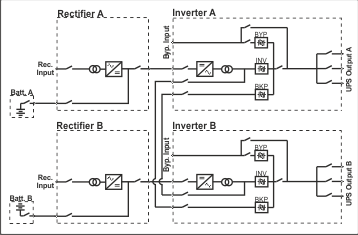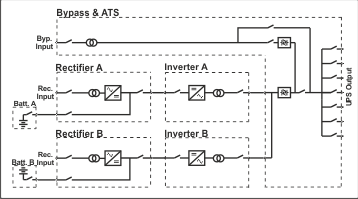FAQ

Frequently Asked Questions
What is the difference between industrial and standard UPS?
Industrial vs Standard UPS
As in simple word: commercial/standard ups have limited protection for input & output & can be use in telecom sector like server, IT field, office,...,etc industrial UPS have critical protection for critical condition & have capability of supplying dynamic over loads so there are used in oil & gas sector, power station, water & waste sector,...,etc.What redundancy means in UPS systems?
Redundant UPS
However a single UPS can provide protection, availability & reliability but like other devices it can fail. A redundant UPS system consist of 2 or more UPS supporting each others in case of any failure. Different typologies are available for redundant UPS systems like cascade, parallel & hot stand-by.What is the difference between redundant ups typologies?
Redundant Configurations
Tavan Pooyesh support 3 different configurations for Redundant UPS : - Active Hot Redundant - Parallel Redundant - Passive Hot Redundant Reliability, total load supply capability, complexity & cost are the main factors which are affected in mentioned configurations.What are the cons and pros of active redundant configuration?

Active Hot Redundant
Total Load is broken into tow half load and supplied separately by each UPS. In case of one UPS failure the other will take 100% of the load. In normal conditions each UPS operate independently and with half load therefore instability in one UPS cannot spread to the other. In Spite of that, when total load cannot divided into half loads this solution cannot be applied.What are the cons and pros of parallel redundant configuration?

Parallel Redundant
Total Load is supplied by a common bus and each UPS take 50% the load all the time. In case of one UPS failure the other will take 100% of the load. In spite of this fact that high rating load (up to 200%) can be supplied in this way, instability in one UPS can be spread to the other due to common bus.What are the cons and pros of passive hot redundant configuration?

